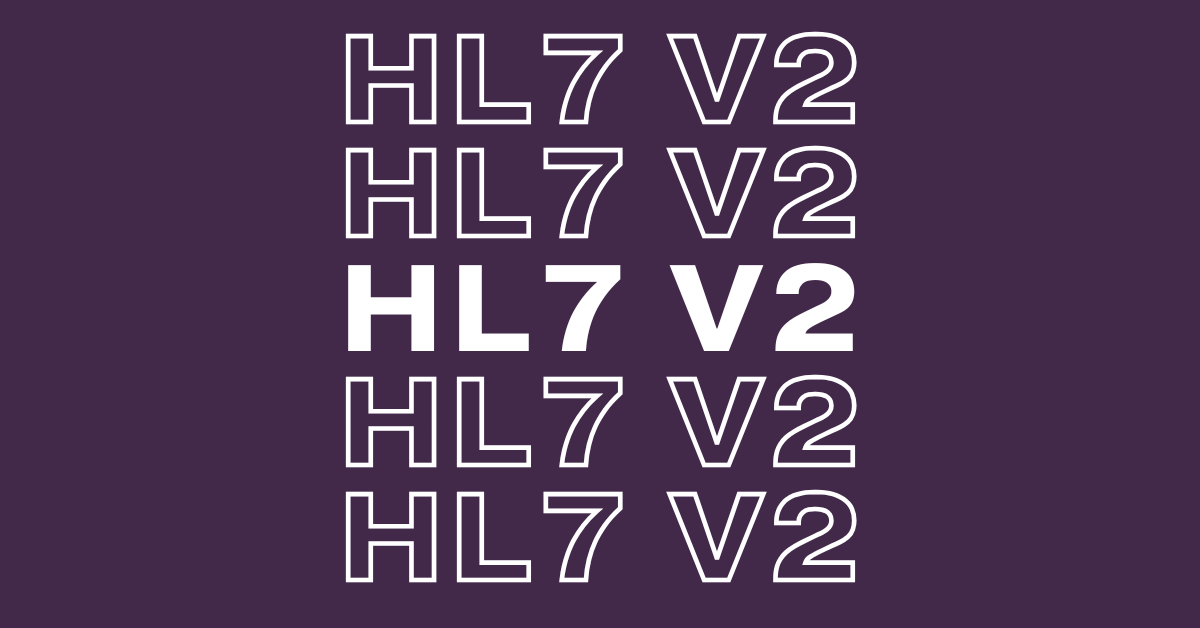Most healthcare teams don’t need another app — they need safe, reliable connections among the apps they already use. Healthcare API development with HCINT focuses on practical, standards-based integrations that fit your clinical workflows without disruption.

Why healthcare API development matters now
Healthcare organizations are moving from point-to-point interfaces and manual export routines to contract-first APIs that can be governed, monitored, and evolved. Payers, regulators, and patients expect status visibility, near-real-time data, and secure access across settings of care. At the same time, clinical teams cannot afford new screens or extra clicks. The right APIs make existing systems work better — surfacing the right data in familiar places, with controls that meet security and compliance expectations.
HCINT provides healthcare API development that interoperates with EHR, LIS, PACS/VNA, and revenue systems using the standards that matter: HL7 v2 (including ADT, ORM, ORU/OBX, SIU/SCH) and FHIR R4 resources and events. We apply resilient patterns (idempotency, retry/backoff, durable queues), strong security (RBAC and least privilege), and observability (latency/throughput/error taxonomies, health checks, and cost telemetry). The goal is reliable, governable data flows that support patient care and operations.
What we can enable today: 7 practical API use cases
The items below are representative implementation scenarios (use cases) we can design and deliver. They are examples — not claims about prior client deployments.
- Patient and provider master data — FHIR Patient/Practitioner/Organization APIs with identity matching and controlled updates; normalization of inbound HL7 v2 ADT for downstream consumers.
- Orders and results — REST and event adapters between EHR CPOE (ORM) and LIS; results return (ORU/OBX) exposed as FHIR DiagnosticReport/Observation and embedded in patient charts and portals.
- Scheduling and referrals — Conversions between SIU/SCH and FHIR Schedule/Appointment; referral intake, routing, and status APIs across facilities and outreach partners.
- Revenue cycle data services — Prior authorization packet assembly, status polling, payer-aligned rules, versioned endpoints for denials and appeals data exchange.
- Imaging workflows — Study/series metadata APIs for PACS/VNA, viewer embedding options, AI inference orchestration with provenance tracking.
- Patient engagement — Secure APIs for questionnaires, consents, device data, and notifications that integrate within patient apps or appear in EHR side panels via SSO/SMART where supported.
- Terminology and crosswalks — Central services for code sets (LOINC, SNOMED CT, CPT/HCPCS and local codes) exposed as cacheable APIs for mapping and normalization.
Safety, compliance, governance, and observability
APIs in healthcare must be safe by default. HCINT designs controls that align to HIPAA expectations and your organization’s security posture. We build auditable flows that can be inspected, tested, and proven — without placing protected health information at unnecessary risk.
- Access controls — Role-based access control (RBAC), least-privilege service accounts, isolated environments, and network segmentation.
- Auditability — Structured logging of requests/responses with sensitive field redaction; validation against HL7 v2 and FHIR schemas; event provenance captured for review.
- Zero-retention options — For AI-adjacent workloads (summarization, classification, enrichment), we support zero-retention inference, prompt/version logging, and explicit allowlists.
- Operational telemetry — Health checks, SLO dashboards, queue depth and latency monitoring, failure reason taxonomy, and per-transaction cost visibility.
- Resilience patterns — Idempotent endpoints, at-least-once delivery backed by durable queues, dead-letter handling with replay, exponential backoff, and circuit breakers.
Integration patterns that work in healthcare
- Schema-first APIs — OpenAPI/JSON Schema for REST; contracts drive code generation, mocks, and automated conformance tests.
- Event-driven bridges — HL7 v2 in → canonical events → outward adapters (FHIR/REST); a clean fan-out to portals, analytics, and partner systems.
- Workflow embedding — Contextual launch and SMART on FHIR where available, or lightweight embedded panels/iFrames with SSO — so clinicians stay in their workspace.
- Retries and idempotency — Idempotency keys, deduplication guards, and safe replays from queues or partner retries.
- Versioning and deprecation — Semantic versions, compatibility windows, canary releases with quick rollback to reduce change risk.
Illustrative scenario (composite example, not a client case)
Context — A specialty group wants a single API surface for lab ordering and result return while operating across multiple facilities and two laboratory systems. Staff currently re-enter orders; external providers sometimes receive results late.
Approach — A schema-first, canonical “Order” model drives adapters: EHR CPOE (HL7 ORM) → canonical → LIS A (v2) and LIS B (REST). Results (ORU/OBX) map to FHIR DiagnosticReport/Observation. Idempotent processing protects against duplicate submits; durable queues and replay handle transient downtime. Observability dashboards track throughput, latency, and error categories.
Expected outcomes — Fewer manual touches, clearer order/result status visibility, and consistent results in the EHR and outreach portal. IT teams gain actionable telemetry for support and capacity planning. This scenario illustrates the patterns we can implement and adapt to your environment.
Architecture options for healthcare API development
- On-premises — Virtual machines or appliances inside hospital networks, integrating with your existing interface engines and identity providers.
- Private VPC — Single-tenant VPC, IP allowlists, customer-managed keys, and private connectivity to source systems; well-suited for vendors and IDNs.
- Hybrid — On-prem connectors with a managed control plane; optional zero-retention data paths for particularly sensitive payloads.
- Observability plane — Centralized logs, metrics, and traces across environments; SSO for dashboards and access reviews to simplify governance.
Delivery approach: Discovery → Pilot → Scale → Govern
- Discovery — Process mapping, system inventories (EHR/LIS/PACS/VNA/RCM), standards review (HL7 v2 feeds, FHIR R4 scope), preliminary risk register and success criteria.
- Pilot — One or two flows end-to-end (for example, orders/results); contract tests, synthetic data, canary release and rollback plan, runbooks for on-call support.
- Scale — Expand endpoints and events; grow code mappings; introduce self-service documentation and SDKs; set SLOs with alerting and cost telemetry.
- Govern — Access reviews, audit evidence packs, version lifecycle and deprecation windows, periodic dependency and security updates.
Value by organization type
- Hospitals and IDNs — Consolidate legacy interfaces, provide FHIR APIs for partner applications, enrich analytics sources, and reduce manual rework.
- Independent laboratories — Outreach ordering and result return APIs, OBX normalization, portal integration, and payer-friendly revenue cycle endpoints.
- Clinics and specialty groups — Referral, scheduling, and result visibility across sites; patient engagement experiences that do not force clinicians to switch screens.
- Health IT vendors — Standards-aligned connectors (HL7 v2/FHIR), versioned partner APIs, and deployment guides that help your customers succeed.
What you get with HCINT
- Standards-literate engineers — Practical HL7 v2 (ADT/ORM/ORU/OBX/SIU/SCH) and FHIR R4 expertise shaped by hospital and lab realities.
- Workflow-first design — We embed within your EHR/LIS/PACS so clinicians stay in familiar tools and established processes.
- Governance and safety — RBAC and least privilege, audit logs, schema validation, and optional zero-retention paths for AI-adjacent scenarios.
- Operational reliability — Idempotency, retries, durable queues, dead-letter handling, and the metrics operations teams need.
- Vendor-neutral integration — We work with your stack. If you are modernizing interface engines, we support coexistence and a managed migration path — see our Mirth to BridgeLink services.
- Documentation and handover — Contract-first specs, SDKs, and runbooks so your team can operate confidently after go-live.
Readiness checklist for CIO/CMIO/IT
- System inventory ready — Source/target systems, message types and triggers, data owners, and SLAs documented.
- Standards scope confirmed — HL7 v2 feeds (channels and triggers), FHIR R4 resources/events, and code sets in use.
- Security posture aligned — RBAC roles, network boundaries, BAA status, logging and retention policies, and data-processing agreements.
- Operational model — Who monitors dashboards, triages errors, and communicates during incidents; escalation paths and on-call coverage.
- Change control — Versioning expectations, deprecation windows, canary and rollback procedures, and dependency management.
- Success metrics — Clear qualitative and quantitative indicators (for example, reduction in manual re-entry, visibility of order/result status, and predictable operations load).
Call to action – explore services and book a consult
If you are evaluating healthcare API development or need to stabilize existing interfaces, we can outline a practical path that fits your workflows — no pressure to buy.
Explore our services, contact our team through the contact form, or Book a 20-minute free consult.




